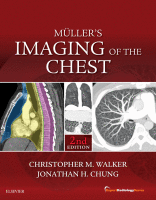Physical Address
304 North Cardinal St.
Dorchester Center, MA 02124

Neuroendocrine Hyperplasia and Pulmonary Tumorlets Etiology, Prevalence, and Epidemiology Normal lung tissue contains scattered neuroendocrine (Kulchitsky) cells within the bronchial and bronchiolar epithelium. These cells play a role in the detection of hypoxia as well as fetal lung development and…

Schemes for Staging The most widely used scheme for staging non–small cell lung cancer (NSCLC) is the TNM classification. A variety of alterations in this scheme have been made to better group patients with similar prognosis and treatment options. The…

Etiology Lung cancer arises when cells lining the bronchi or peripheral airways undergo neoplastic change in response to an inciting agent or agents. The most common and well-recognized cause of lung cancer is cigarette smoking, which has been unequivocally linked…

Background Lung cancer is the third most common cancer and the leading cause of cancer-related death in the United States. The most important risk factor for lung cancer is smoking, which results in approximately 85% of all US lung cancer…

Etiology Since the recognition of human immunodeficiency virus (HIV) infection as the cause of acquired immune deficiency syndrome (AIDS) in the 1980s, many changes have occurred in the demographics, complications, and treatment of this disease. AIDS is the most advanced…

Parasites are defined as organisms that live in or on another living organism, obtain part or all of their organic nutriment from that organism, and cause some degree of damage to their host. Parasitic infestations occur mainly in tropical and…

Viruses are the most common cause of respiratory infection and may result in rhinitis, pharyngitis, laryngotracheitis, bronchitis, bronchiolitis, and, less commonly, pneumonia. Most viral pneumonias in immunocompetent adults are due to influenza viruses; other common viral etiologies include respiratory syncytial…

Etiology Fungal infections of the chest can be divided into two groups based on pathogenesis. The first group is composed of endemic fungi, including Histoplasma capsulatum, Coccidioides immitis, Blastomyces dermatitidis, and Cryptococcus gattii , and the second group is composed…

A variety of nontuberculous mycobacteria (NTMB) can cause pulmonary infections, with important differences in epidemiology, microbiology, host response, and treatment options across the various species. The severity of an infection caused by NTMB is largely determined by the immune status…

Overview Etiology, Prevalence, and Epidemiology Tuberculosis (TB) is a chronic recurrent contagious infection caused by Mycobacterium tuberculosis. M. tuberculosis is an aerobic, nonmotile, non–spore-forming rod that is highly resistant to drying, acid, and alcohol. It is transmitted person to person…